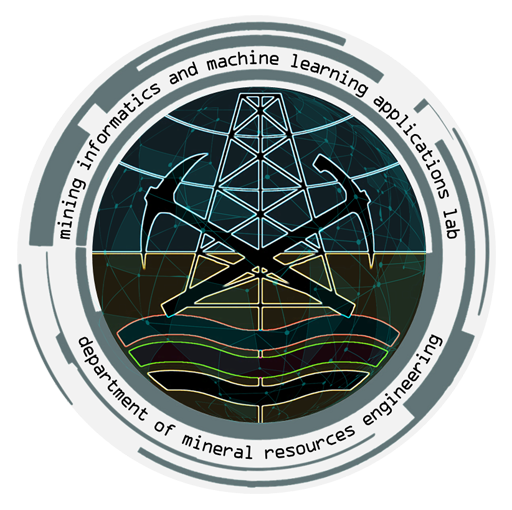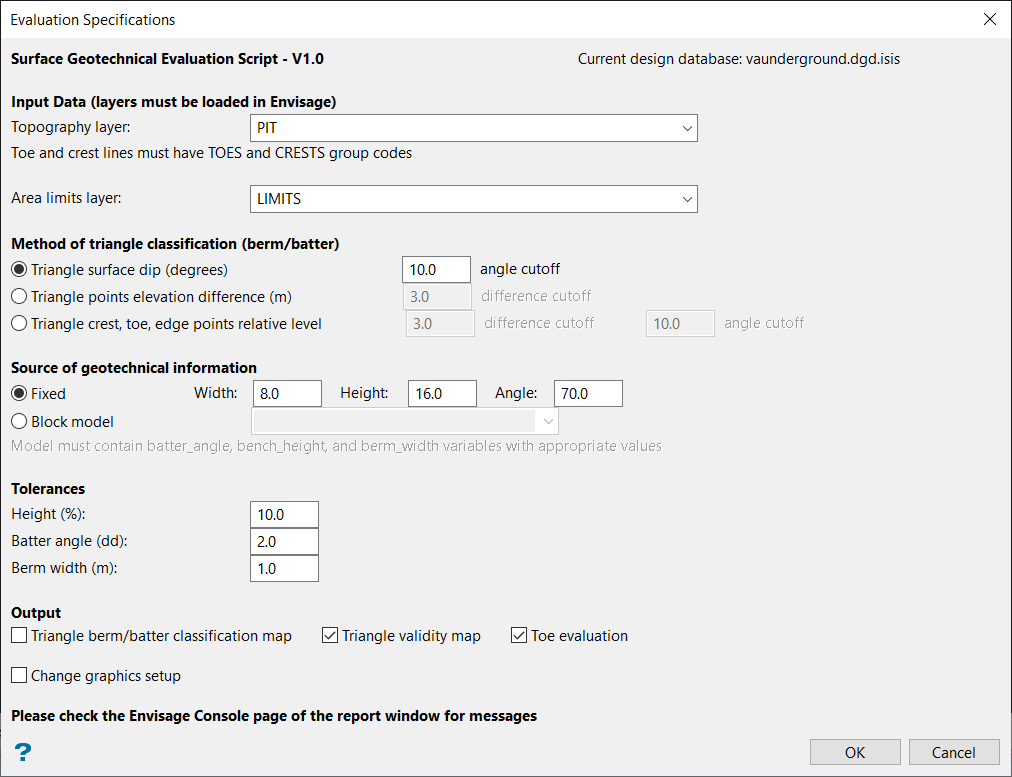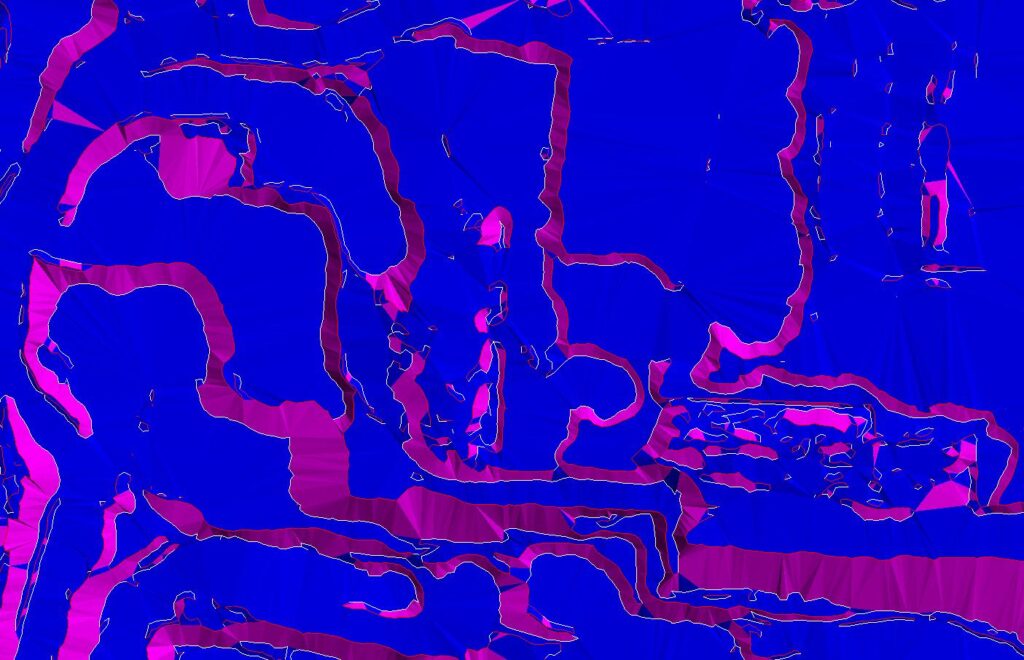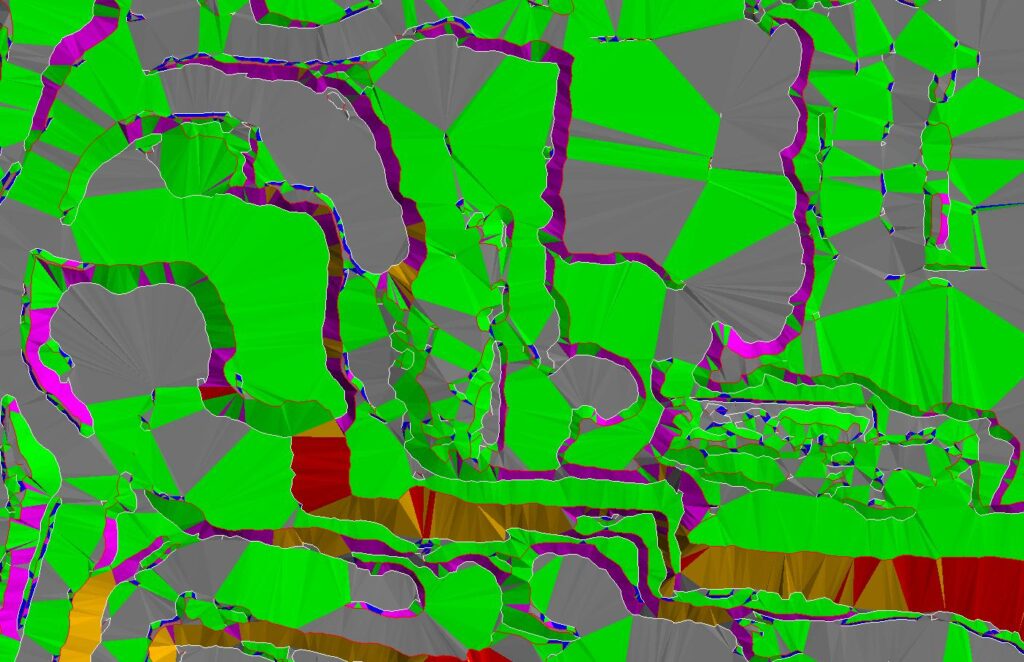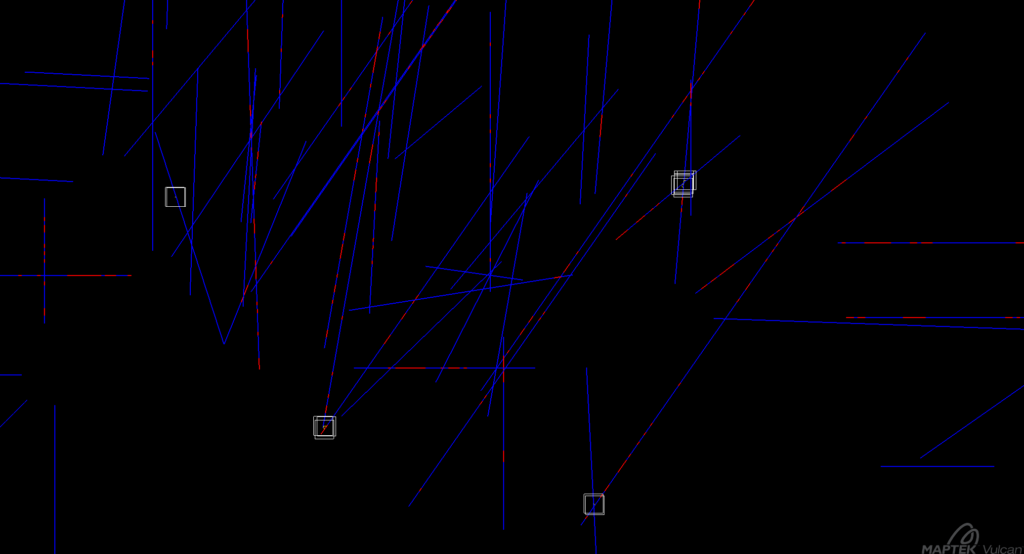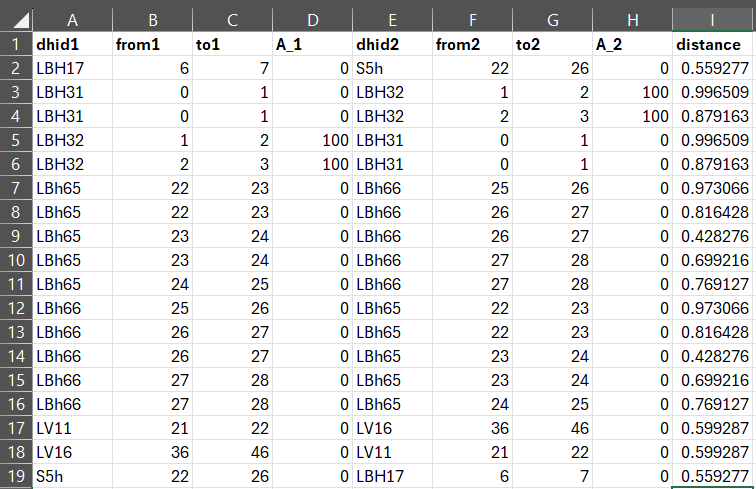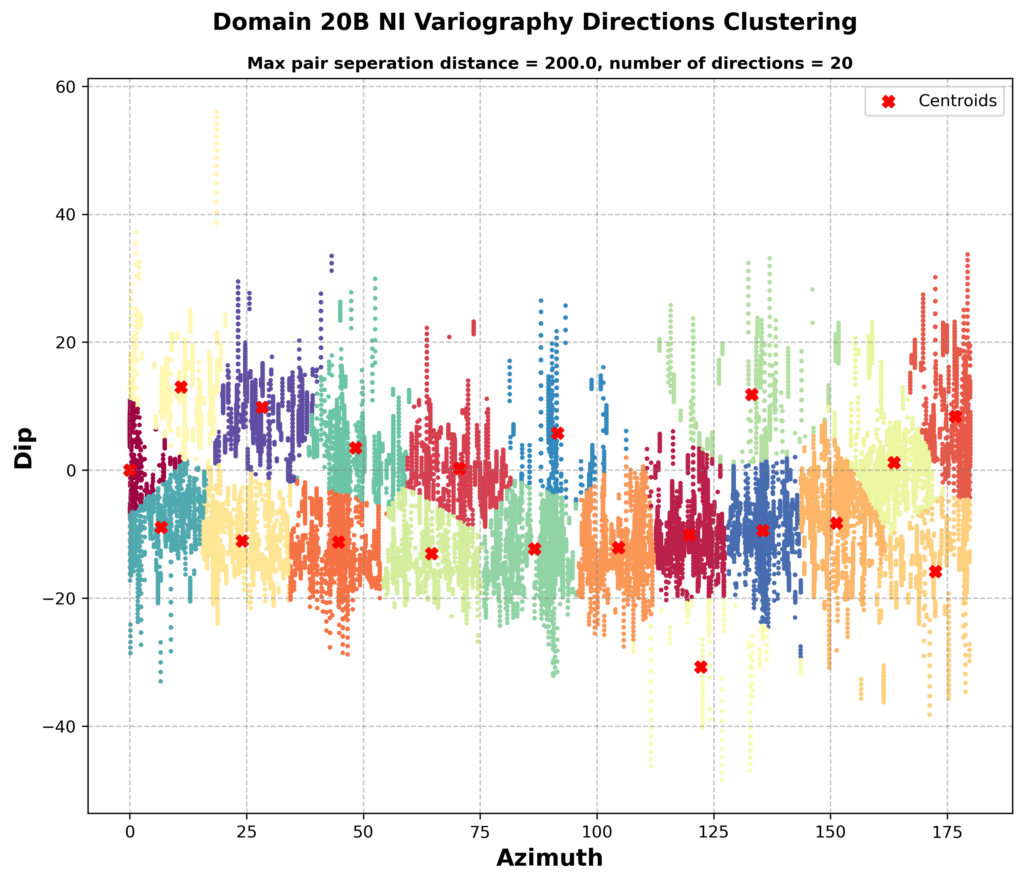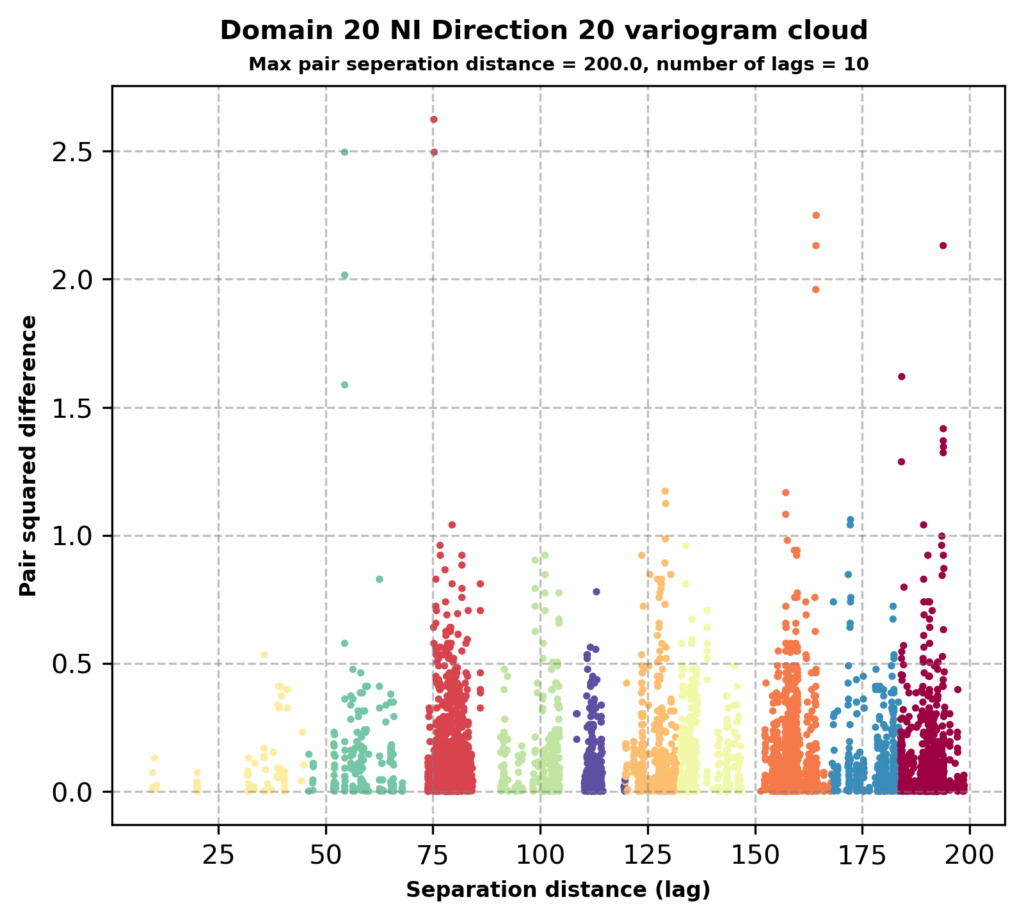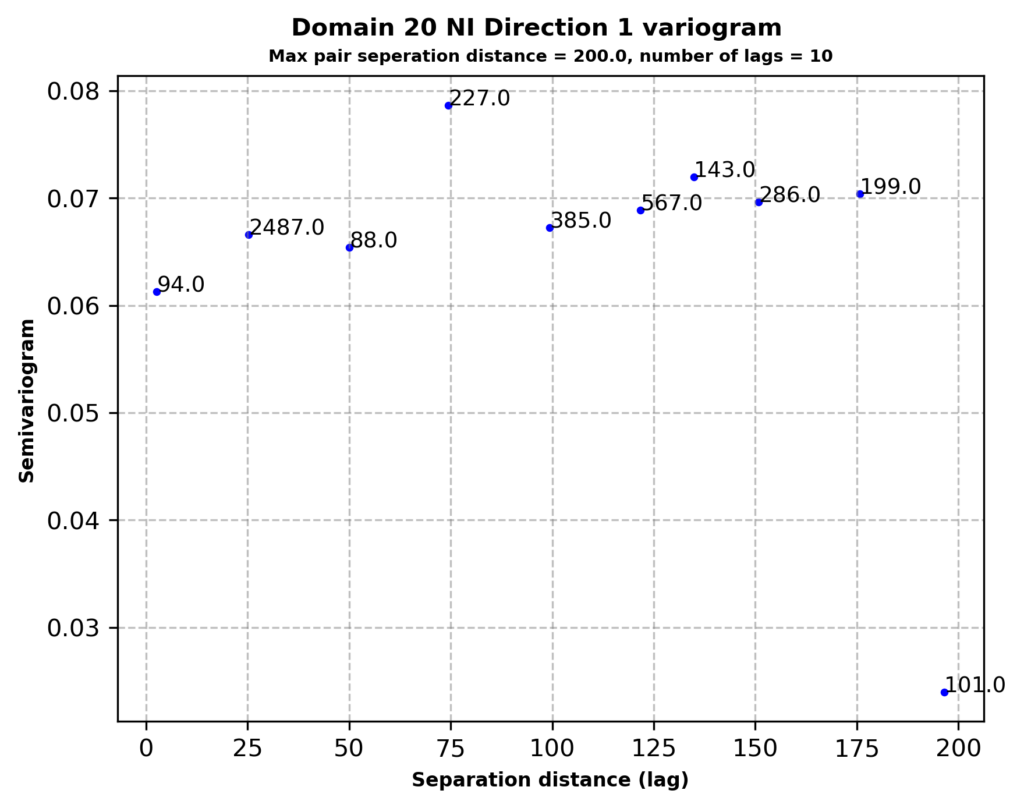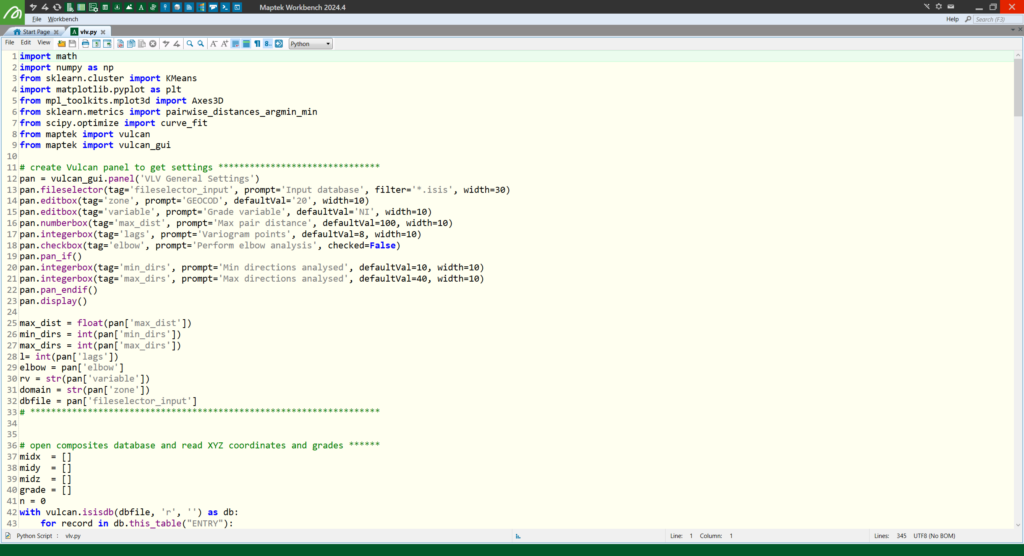
The Laboratory has the ability to develop small or large applications, which operate independently or in combination with other software to approach mine planning problems. These applications can be developed in languages such as Visual C++, Perl, Python, etc. and rely on existing or new data processing and analysis algorithms, as well as machine learning. Below are examples of applications developed in the Laboratory for companies in Greece and abroad as well as for research purposes.
Surface Geotechnical Evaluation Script – geotech_eval_2022.lava: A Maptek Vulcan application written in Perl, which analyses the surface of an open pit, classifies batters and berms, and identifies areas of excavation that do not meet geotechnical criteria such as maximum batter angle, minimum berm width, and maximum bench height.
Proximity Analysis Script – proximity.lava: A Maptek Vulcan application written in Perl, which calculates the distance between boreholes along their entire length, reports those that are closer than a certain tolerance, graphically displays the points of boreholes that exceed the limit and flags them in the database.
Variable Lag Variography – vlv.py: an application that works through Maptek Vulcan or standalone, written in the Python language, which reads a database of evaluated samples (composites), creates all possible pairs, and then groups them into the most informed directions using the k-means method. The number of directions is given by the user while the application enables analysis to determine their optimal number. In the next step, the application groups the pairs of each direction in the most informed intervals (lags) and calculates the value of the experimental variogram in each of them. The application completes its function by automatically adjusting a variogram model based on the calculated points of all directions examined.
